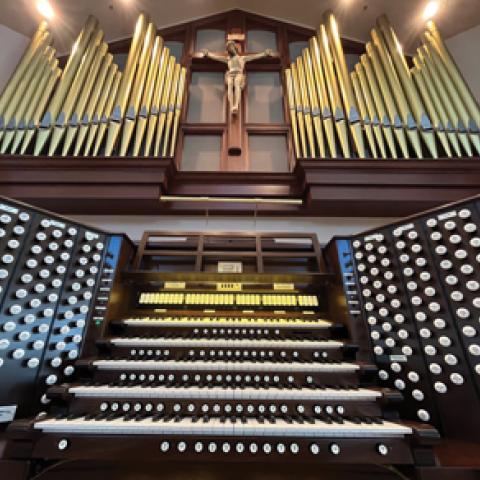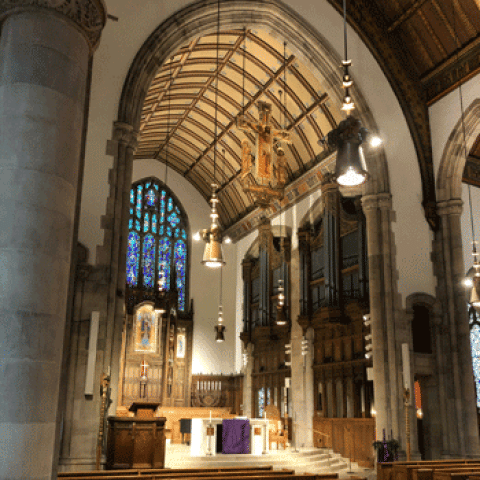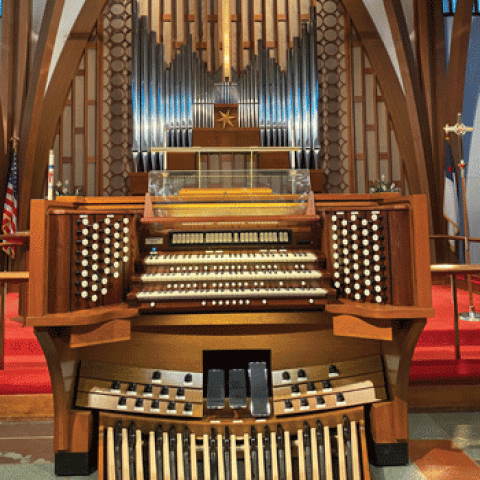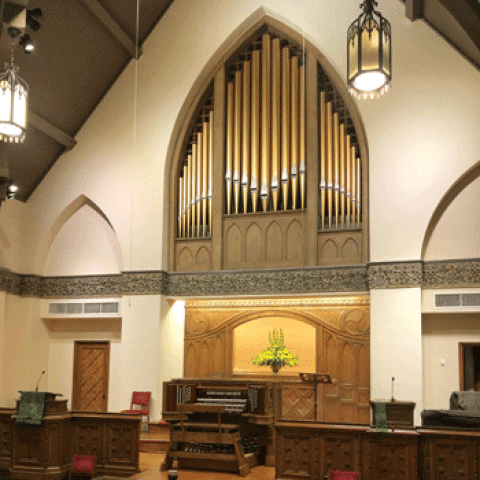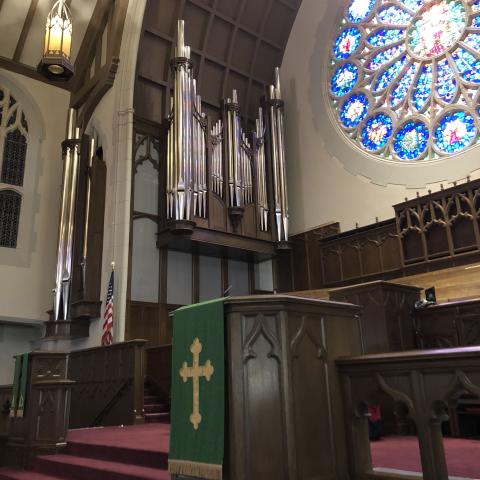
Schantz Organ Company, Orrville, Ohio, has completed a project at First Presbyterian Church, Athens, Georgia. A seven-rank Antiphonal division was added to the three-manual, 38-rank organ built in 2002. New chambers were arranged in the rear of the worship space to house the division, which consists of a principal chorus, two flutes, and a Trompette Heroique.
Schantz is engaged to move its 2003 Opus 2209 from Burlington, North Carolina, to Our Lady of Peace Catholic Church, Cleveland, Ohio. As part of this project, the console will be upgraded with a modern control system and new casework will be built for this 31-rank organ, as the organ’s first home was in chambers.
In addition to major projects, Schantz regularly undertakes small projects, such as the restoration of the Swell and Choir expression engines for the 1967 M. P. Möller organ at Boardman United Methodist, Youngstown, Ohio.
For information: schantzorgan.com.
Other organ builder news:
C. B. Fisk open house for Opus 164

